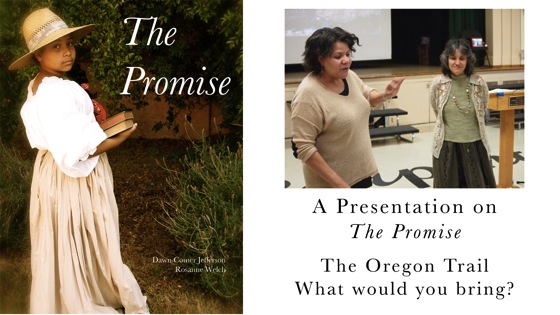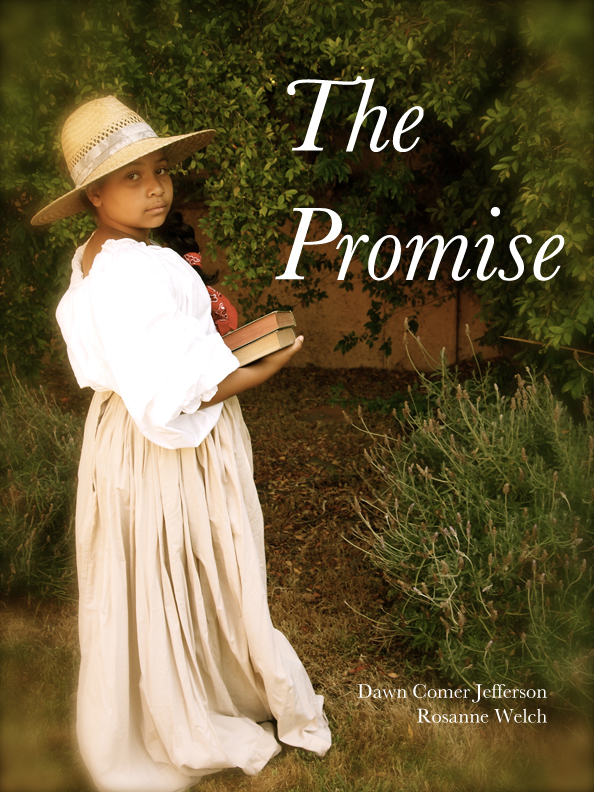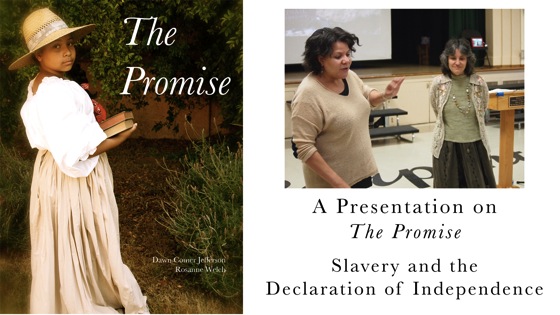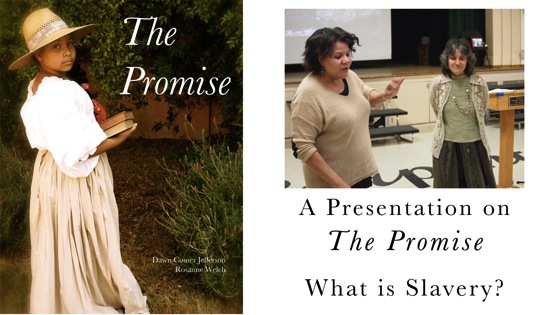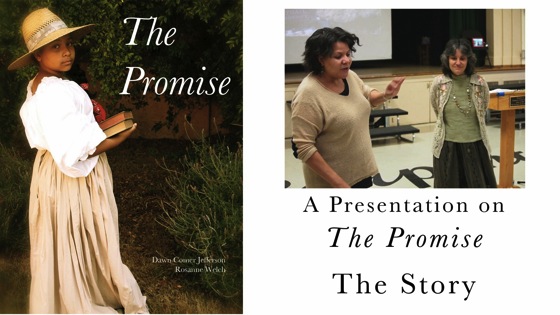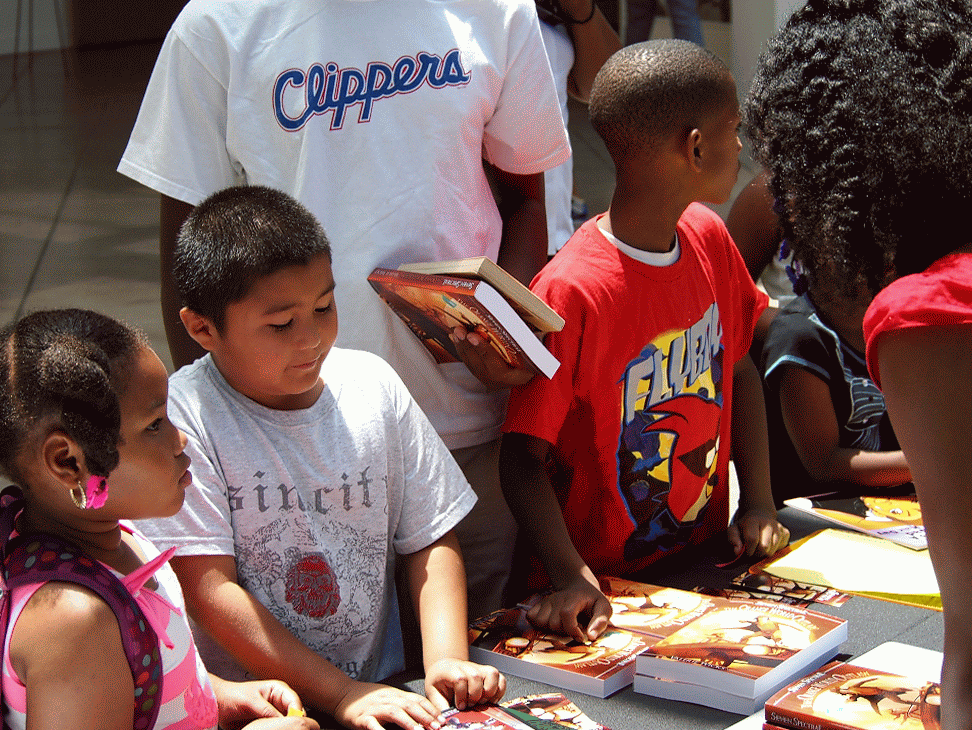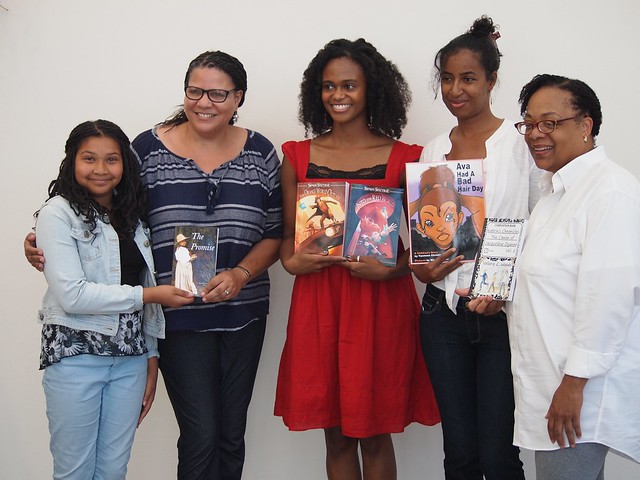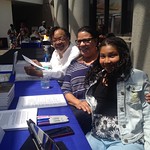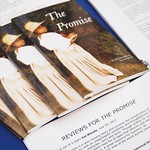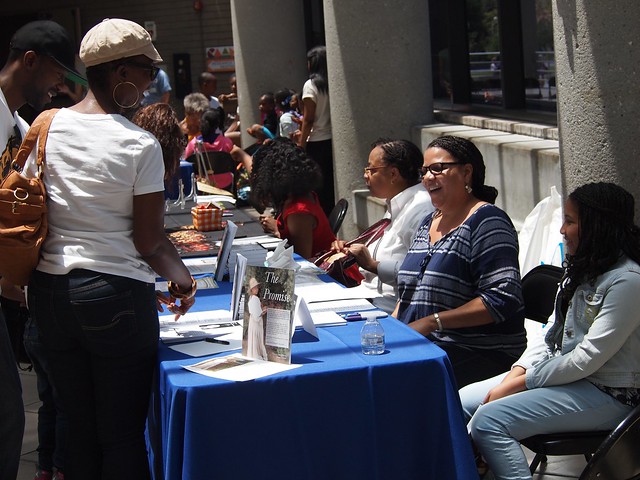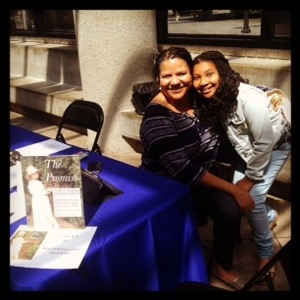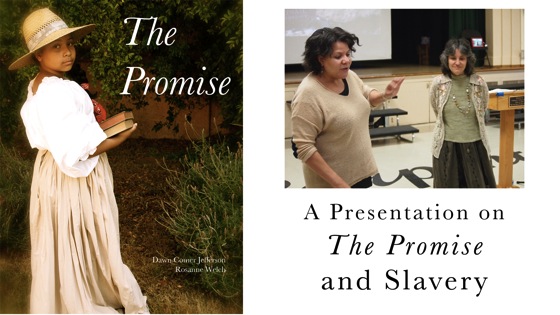Dawn Comer Jefferson (L) and Dr. Rosanne Welch (R) present on their book, The Promise
On Friday March 21st my co-author, Dawn Comer Jefferson and I had the pleasure of making a presentation on “Slavery and the Oregon Trail” based on our book The Promise to the 3rd, 4th and 5th grades of Carpenter Avenue Elementary School as the guests of the non-profit Parents For Carpenter.
Transcript:
Comer Jefferson: When you went on the trail, you were usually in a carriage or a wagon which was pulled by oxen and often you had all your belongings that you could bring. Oftentimes, people packed too many things and then they had to throw them out of there wagons along the way. the whole trail was littered with people’s things — with piano, with your china, with all these things you thought you would need in the new world, but didn’t.
Welch: Did any of you ever go to the Autry Museum in Griffith Park? With your parents? There is a whole room of stuff people left behind on the trail. Really fascinating the things they thought they could carry. You get halfway there and suddenly you figure out that if the oxen die along the way, I have to pull the wagon by myself. So, I think I’ll throw away all these things I thought I needed because I want the oxen to make it through the other side. Very scary moment there. Definitely. We have that in the book which is what we were interested in.
